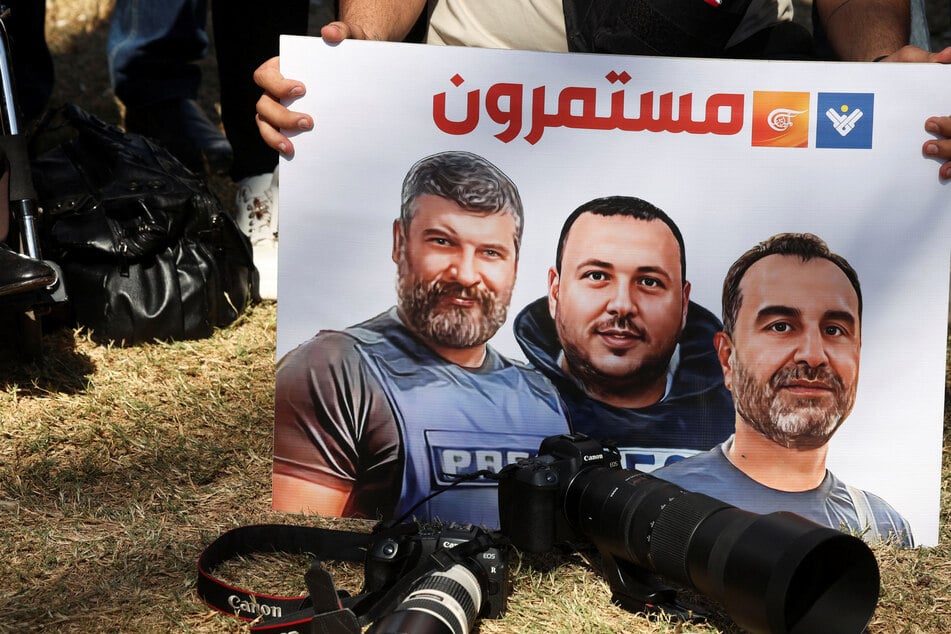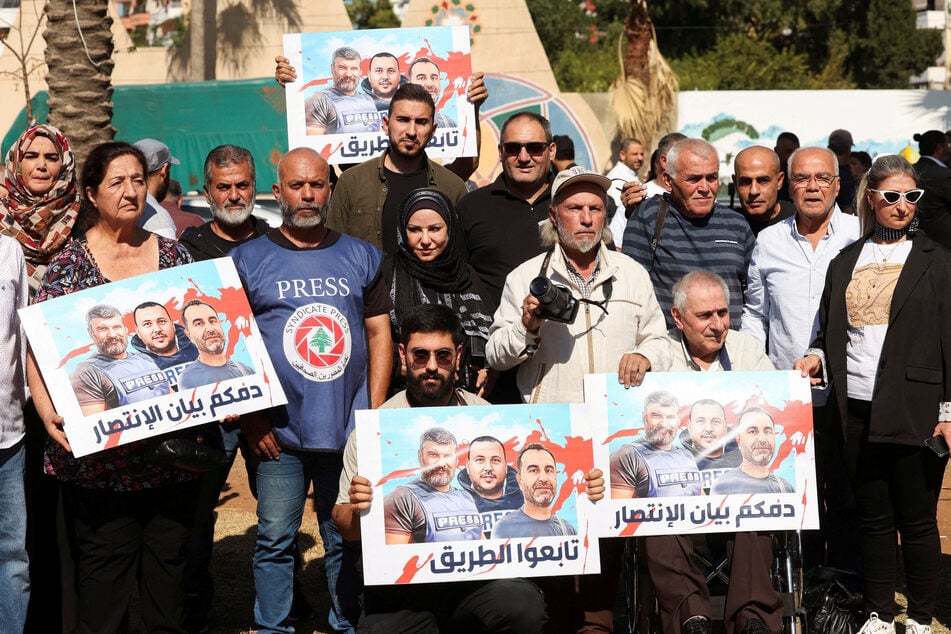Israel killed Lebanese journalists with US weapons in "apparent war crime"
New York, New York - Human Rights Watch said on Monday said an Israeli air strike that killed three journalists in Lebanon last month was an "apparent war crime" and used a bomb equipped with a US-made guidance kit.

The October 25 strike hit a tourism complex in the Druze-majority south Lebanon town of Hasbaya where more than a dozen journalists working for Lebanese and Arab media outlets were sleeping.
The Israeli army has said it targeted Hezbollah militants and that the strike was "under review."
HRW said the strike, relatively far from the Israel-Hezbollah war's main flashpoints, "was most likely a deliberate attack on civilians and an apparent war crime."
"Information Human Rights Watch reviewed indicates that the Israeli military knew or should have known that journalists were staying in the area and in the targeted building," the watchdog said in a statement.
HRW "found no evidence of fighting, military forces, or military activity in the immediate area at the time of the attack," it added.
The strike killed cameraman Ghassan Najjar and broadcast engineer Mohammad Reda from pro-Iran, Beirut-based broadcaster Al-Mayadeen, and video journalist Wissam Qassem from Hezbollah's Al-Manar television.
The watchdog said it verified images of Najjar's casket wrapped in a Hezbollah flag and buried in a cemetery alongside fighters from the militant group.
But a spokesperson for the militant group said he "had no involvement whatsoever in any military activities".
HRW report implicates Boeing and Woodard in attack

HRW said the bomb dropped by Israeli forces was equipped with a US-produced Joint Direct Attack Munition (JDAM) guidance kit.
The JDAM is "affixed to air-dropped bombs and allows them to be guided to a target by using satellite coordinates," the statement said.
Remnants from the site were consistent with a JDAM kit "assembled and sold by the US company Boeing."
One remnant "bore a numerical code identifying it as having been manufactured by Woodard, a US company that makes components for guidance systems on munitions."
The organization added it had contacted Boeing and Woodard but received no response.
In October last year, Reuters journalist Issam Abdallah was killed by Israeli shellfire while he was covering southern Lebanon, and six other journalists were wounded, including AFP's Dylan Collins and Christina Assi, who had to have her right leg amputated.
In November last year, Israeli bombardment killed Al-Mayadeen correspondent Farah Omar and cameraman Rabih Maamari, the channel said.
Lebanese rights groups have said five more journalists and photographers working for local media have been killed in Israeli strikes on the country's south and Beirut's southern suburbs.
Israel has killed an unprecedented number of journalists in Gaza and Lebanon since the Hamas-led October 7 attacks of last year.
Cover photo: REUTERS

